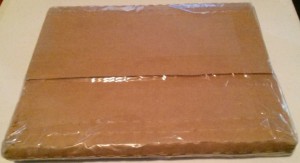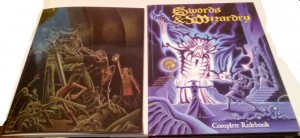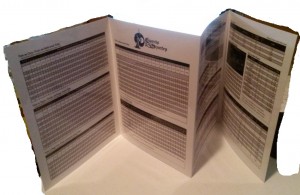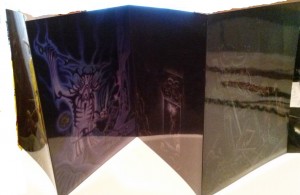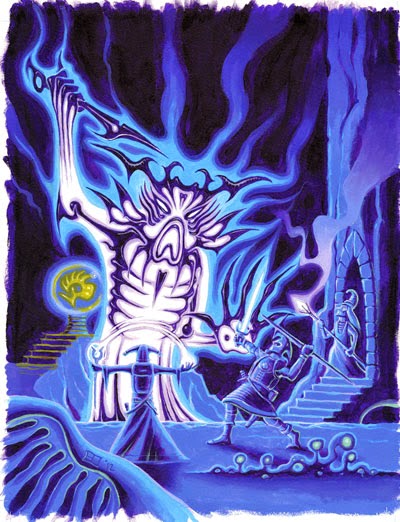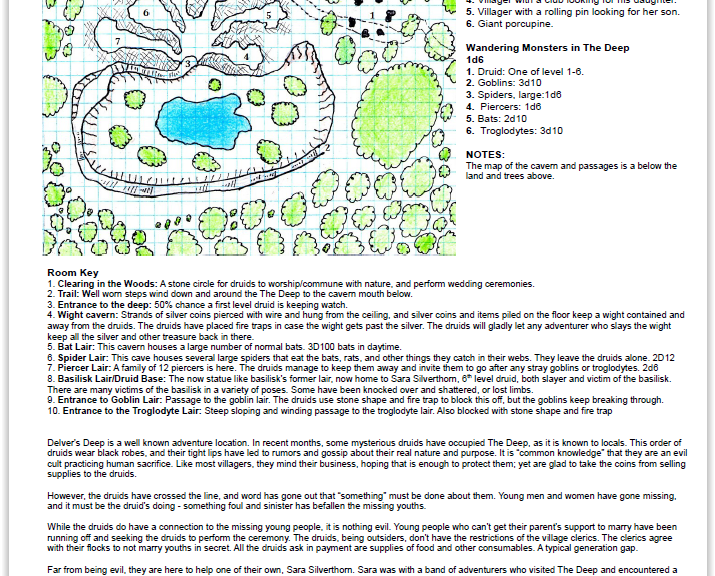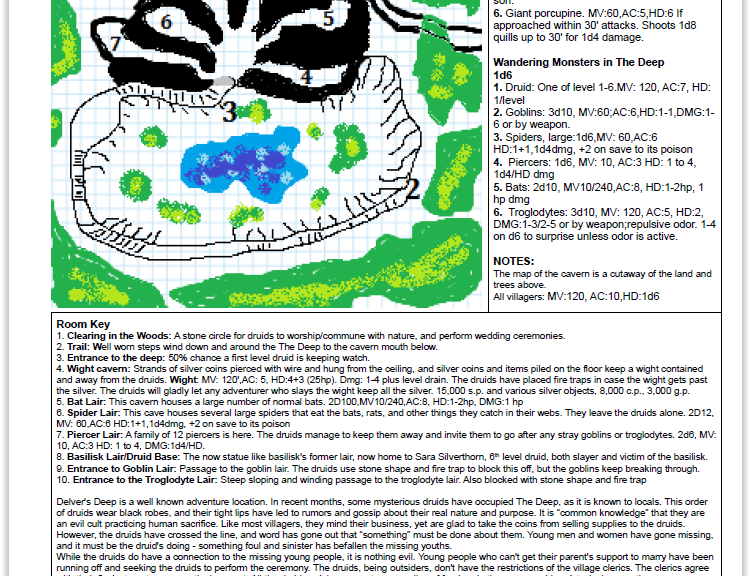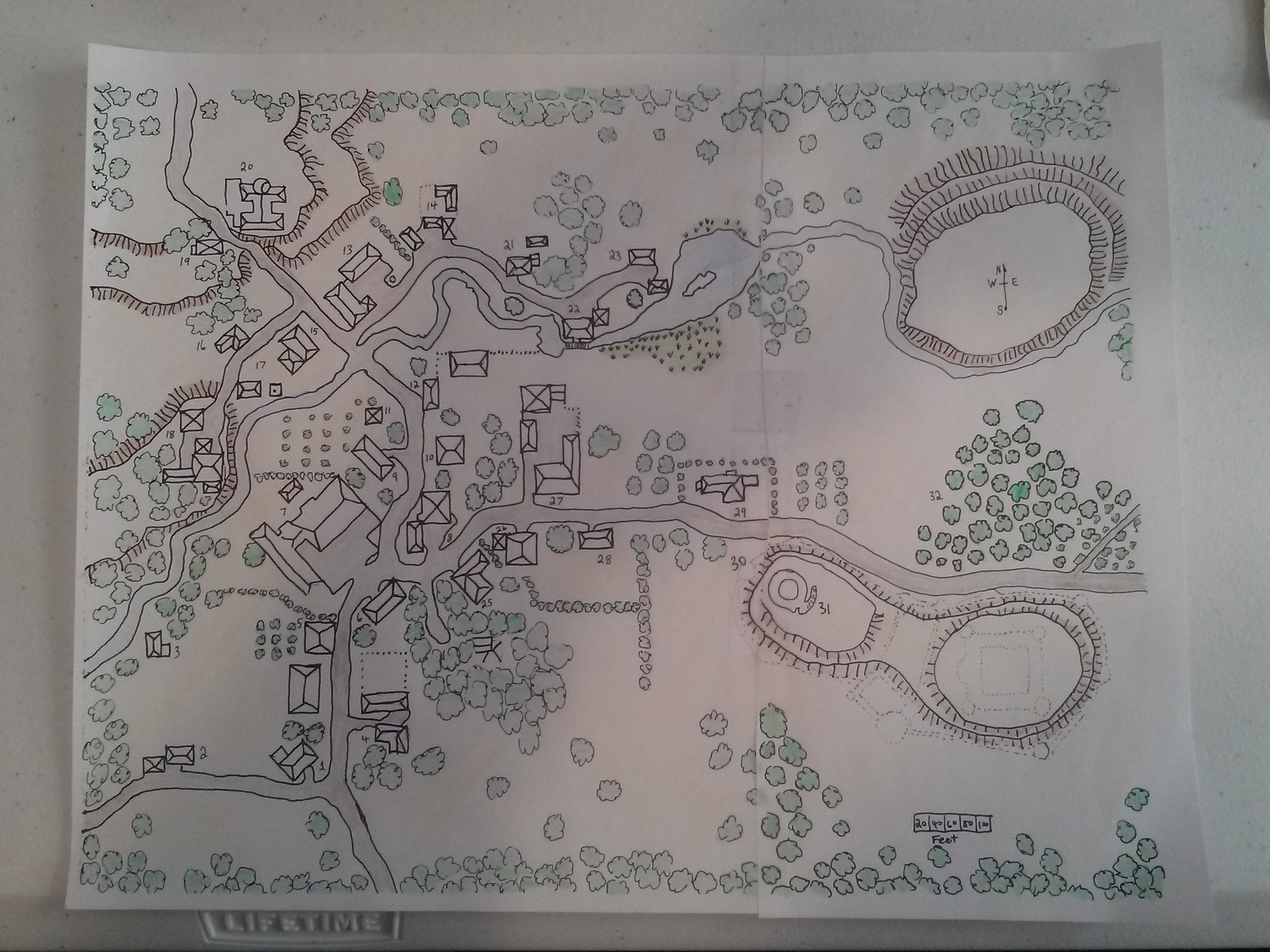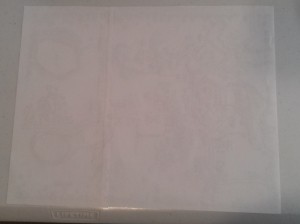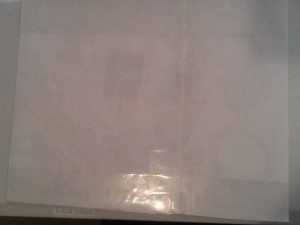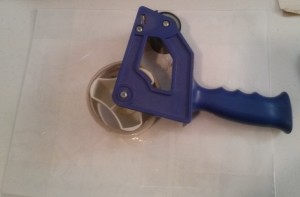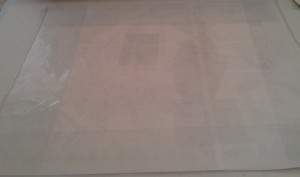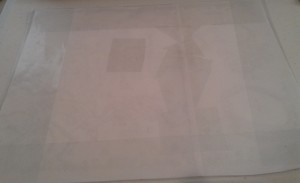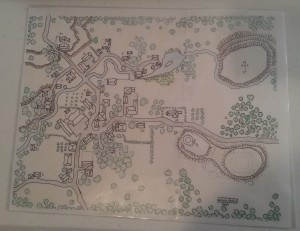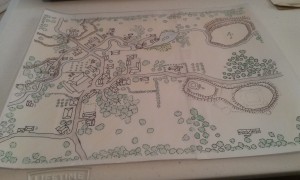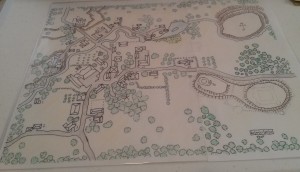In the spirit of Swords and Wizardry Appreciation Day, I ordered the hard back Swords & Wizardry Complete Rulebook, and the Swords & Wizardry GM Screen. They arrived on April 29th, but I have not had time to do more than unpack them and make sure they arrived in good shape, until now.
The Book Itself:
This volume is well put together and the black ink on white paper is easily legible for older eyes. It is 134 pages including three intitial blank pages, cover page, table of contents, Swords & Wizardry license, OGL, and index. There are an additional six pages of supporters, I am guessing from a Kickstarter, These are followed by a full page illustration advertizing a game I have not heard of, a page mentioning the S&W SRD, two pages with a heading of “Notes”, and two final blank pages.
What It Is/Isn’t:
Inside you will find almost AD&D/OSRIC. It has all of the classes from AD&D, except for the illusionist and the bard. There is no mention of psionics. The hit dice are different than OD&D, but not quite AD&D. Magic users and monks have d4, clerics, druids, assassins, and thieves have d6, and the fighter types have d8. As in AD&D, the ranger starts with 2d8. Monsters are d8 as in AD&D.
Armor Class:
Armor class has the two options of ascending, AAC, or descending AC, with descending starting at 9. There is a single saving throw, with a mechanic for the saving throws for each type of peril. I am drawn to the simplicity of AAC and knowing what you need to hit based on the AAC number.
Spells:
The spells described go up to 7th level for clerics and druids, and 9th level for magic users. There is, as with other sections, a house rules section, where Matt Finch describes how he handles spells above 6th level. The spells are presented in alphabetical order for all spells. For old grognards, like me, who like the spells arranged by level within each class, as in AD&D, this takes getting used to. Page 73 marks that last page of spells and the end of the player’s section.
GM Section:
The “Referee” section has an introduction emphasizing the need for Rule 0 [Is there a better link for this?]. It then moves on to how to design an adventure with a basic dungeon map with key and a wilderness map with a key. The discussion then moved on to discussing monsters in the dungeon and challenge levels/ratings. There is just over one page listing all the following monsters by challenge level up to 13.
Monsters:
Before it gets to the monsters, it discusses wilderness encounters and has encounter tables. It then discusses mass combat, siege combat, aerial combat, and ship combat. The monsters presented are most of what I consider the most common/favorite of the genre. The monsters are followed with a page and a half listing of challenge levels up to 17. Finally, there is a concluding page to this section on creating your own monsters.
Treasure:
The treasure section has ten pages of the various types of magic items. It begins with one page on generating a random treasure hoard. Other than the index, the last game worthy page is the sample character sheet. It is only one side of the page, the other side holds the S&W license and the OGL statement. Since this is not the pre-internet age, and the PDF is free, you can print this from the PDF. As always, you can just write your information on a piece of paper, making your own as you go, or find one of the many available online. If not for the internet and the availability of the PDF, this page should be perforated for easy removal, and the licenses would need to be on a different page.
Packaging:
Unlike other resources I have ordered online, the packing job did not cover the entire back of the book with bubble wrap. There was a small area about two or three inches square that was not covered in the center of the book. The cardboard did cover the entire book. I did not have any damage to my order, but this was the only weakness in the packing job. I only noticed this based on the packing jobs of all the other OSR products I have received. This is minor enough that it may just be one of those things that happens when there is a flood of orders. I didn’t get a good picture to illustrate it, like I thought I did. In the grand scheme of things, since the order arrived in perfect condition, not a problem.
Content Of The Book:
In addition to being easy to read and having a solid layout, there are many illustrations of various sizes, including full pages. There are a few corners, or nearly half the side of a couple of pages that were empty. Because the majority of all of the other pages filled the page to all the corners, the white space stood out. Some seemed to call for an illustration, or an illustration to fill the entire space available. There were only 5 or 6 pages in the whole book like this, again a minor issue.
There are suggested house rules and rules variants. As with S&W Core and White Box, there is lots of room to house rule to make it your own. I especially like the forward by Tim Kask, that the rules are only a framework and are not meant to bog the flow of play down into paper shuffling and arguments, and the GM has the final word. The main thing is to have fun! See Rule [-1].
Since the PDF is freely available, one can modify the PDF to include only the player information for use at the table or in online games. Be sure to include the S&W and OGL if you do so in a product you plan to market.
The GM Screen:
The GM screen has the usual charts for attack matrices for characters and monsters, turning undead, indoor and outdoor movement, saving throws, and information on melee and missile weapons. This is on four pages on the GM side of the screen. The player side of the screen are covers of the various iterations of the printed rules. This accordion folder screen is one piece. It is laminated to protect it from wear and tear and spills. It is a light card stock, so not as thick as my AD&D DM screens.
If you use AAC, then nearly two pages of the screen are not needed. You could easily use a binder clip to place information over that portion that you need such as the map or note on the current adventure, or other rules needed frequently during play.
The accordion fold is determined to make the screen look like an ‘M’ when viewed from the GM side. I supposed with use, or a strategically placed small binder clip, one could get a shape that is more suited to use at the table.
Takeaway:
Since we are encouraged to make the game our own, we can hack it to make it closer to AD&D if we choose, to make the character class hit dice the same, and if one has the AD&D manuals or OSRIC, one can easily have all the creatures, spells, and items that are there.
Whether you are old, like me, or just like to have a physical book, it is well worth your while. You could just get the free PDF and print your own, but the issue of binding a hardback is a challenge few wish to face.
I like the simplicity and brevity of Swords & Wizardry Complete. It has enough to do more than get you started. A creative GM can make the creatures in this single volume cover years of play. I have played for over 35 years and have not encountered all the creatures in the AD&D Monster Manual either as a player or a DM.
I am also very into the AAC and how easy it is to calculate without needing a chart. The single saving throw may be tough for some, but it does bring simplicity.
I like the simplicity and don’t like when play bogs down to look up a rule. I mind it more as a player than as a referee, but as a DM it does not take long to feel all eyes upon me, and get frustrated. That long pause of a grinding halt interrupts the momentum. Either mark every page you need for rapid access, make detailed notes, or memorize it, if you don’t want to make it up on the fly. Keep the game flowing. Play should only stop when there is a natural break in the action for a bathroom break or it is the end of the agreed upon ending time, after the last extension runs out.
The GM screen is not a must have for play. One can easily make their own by printing the necessary information from the free PDF, if you even use a screen. I tend to use a screen when I run AD&D for two reasons, tradition and the need to look up combat and other tables. The AD&D screens would be better served to have other information on them than the psionics table, unless there is a lot of psionic activity in a game. I find that distance and a book or clipboard or sheet of paper is enough to cover maps and notes from prying eyes. Unless your game space puts players right next to the DM, I don’t see much use in a screen. I do still like them for the mystery it conveys by hiding something “secret” and “mysterious” from the players. I think the decision to use a GM screen is up to the individual GM. If you are comfortable with the rules, and don’t need it to add to the aura of mystery to game play, then you probably don’t use one.
